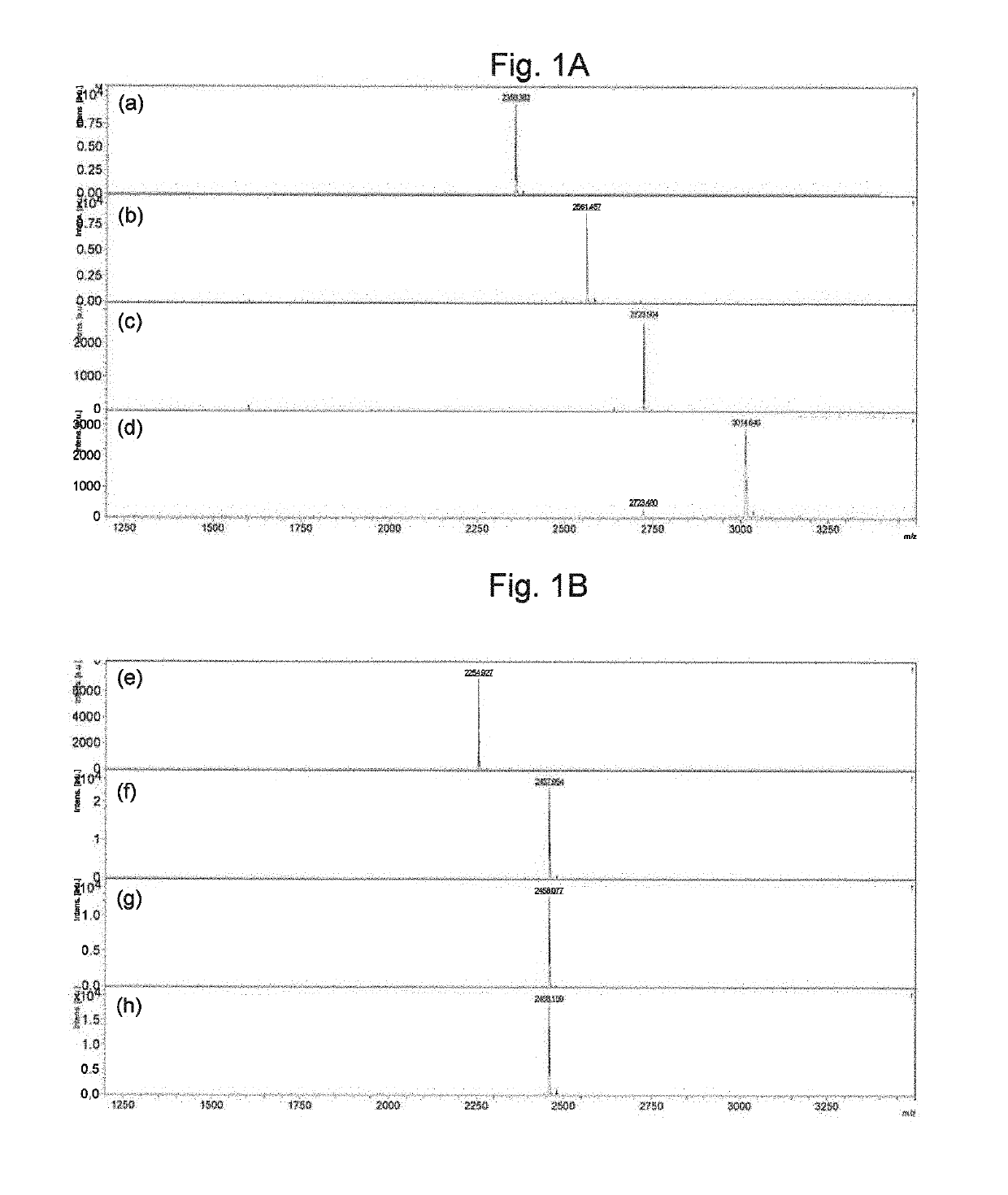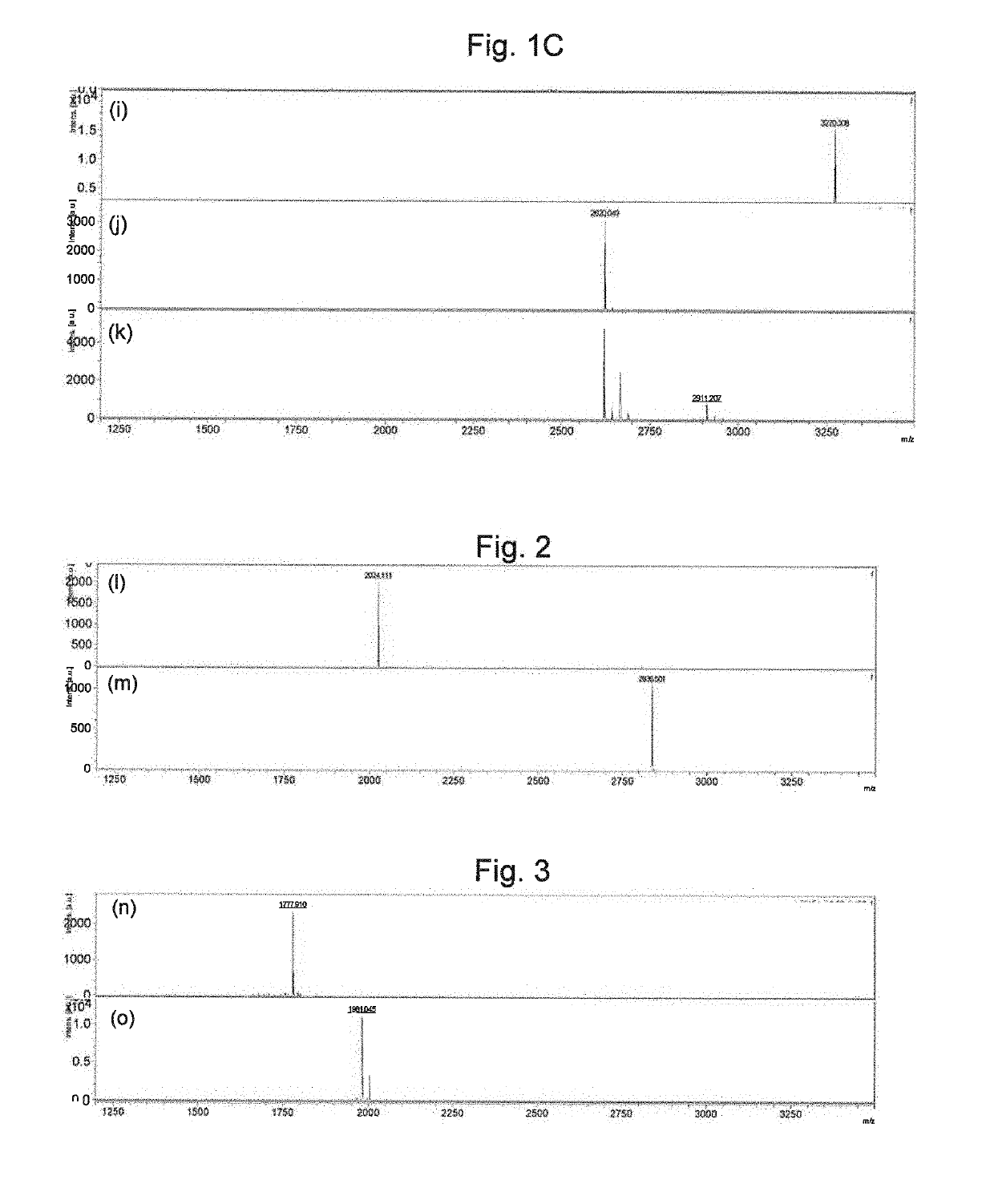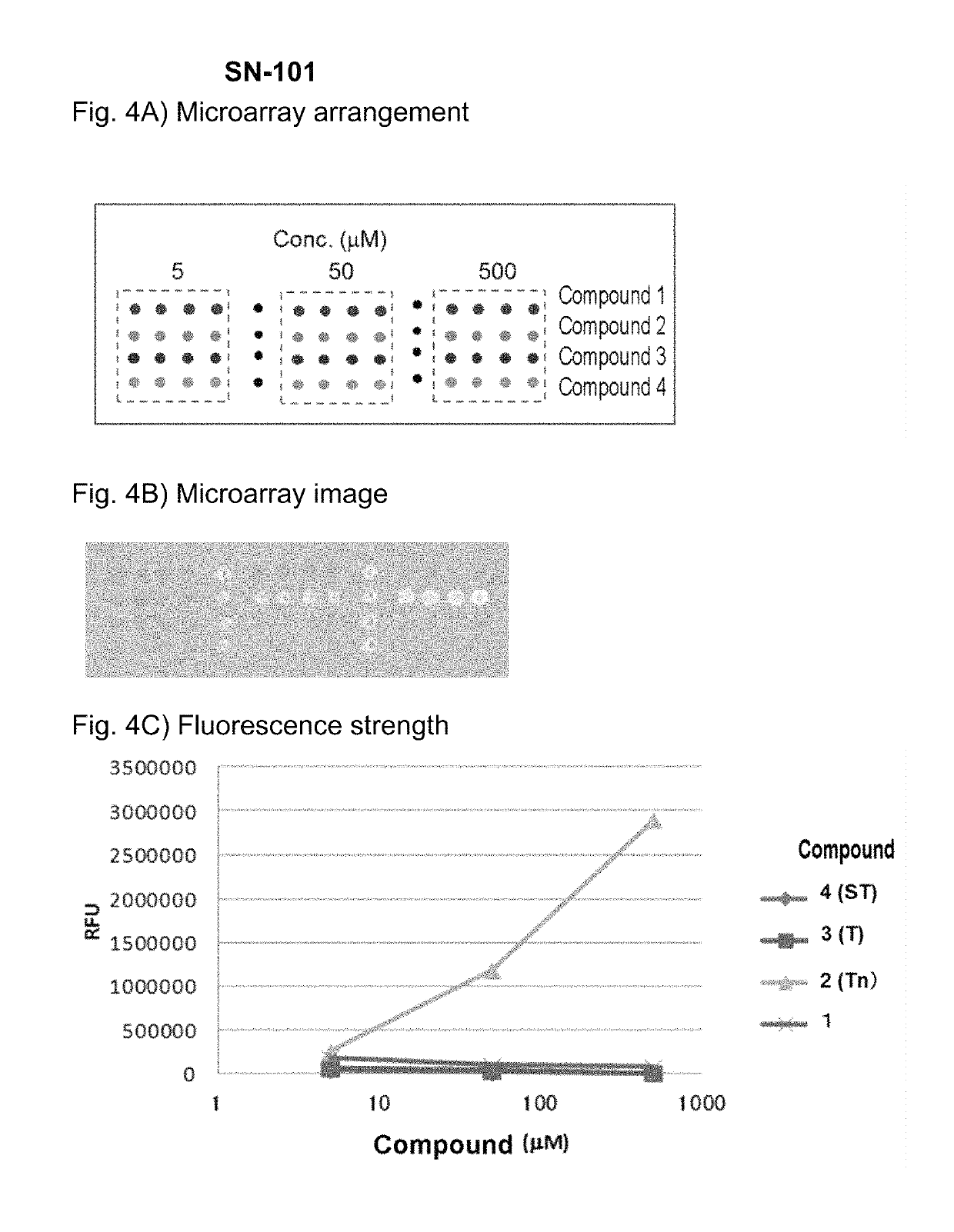Anti-MUC1 antibody or antigen-binding fragment thereof and uses thereof
a technology of anti-muc1 antibody and antigen-binding fragment, which is applied in the field of anti-muc1 antibody or antigen-binding fragment thereof, can solve the problems of inadequate selectivity of cancer cells, and achieve the effect of suppressing the progress or metastasis of cancer and high sensitiveness
- Summary
- Abstract
- Description
- Claims
- Application Information
AI Technical Summary
Benefits of technology
Method used
Image
Examples
example 1
Preparation of Monoclonal Antibody Employing Gly-Val-Thr-Ser-Ala-Pro-Asp-Thr(Tn)-Arg-Pro-Ala-Pro-Gly-Ser-Thr-Ala-Pro-Pro-Ala-His-Gly-Val-Thr as Antigen
[0151]Compound Gly-Val-Thr-Ser-Ala-Pro-Asp-Thr(Tn)-Arg-Pro-Ala-Pro-Gly-Ser-Thr-Ala-Pro-Pro-Ala-His-Gly-Val-Thr Cys-NH2 (85 μg), obtained by adding Cys required for binding carrier protein to C-terminal of Gly-Val-Thr-Ser-Ala-Pro-Asp-Thr(Tn)-Arg-Pro-Ala-Pro-Gly-Ser-Thr-Ala-Pro-Pro-Ala-His-Gly-Val-Thr, was conjugated with keyhole limpet hemocyanin (KLH) and administered to the tail base of BDF (Registered trademark)-1 mice to induce an immune response. The same method was employed 17 hours later to conduct additional immunization with Compound 3. Blood was collected 3 days later and the iliac lymph nodes were collected. The cells collected were fused with myeloma SP2 cells. The hybridomas were cultured in HAT selective medium, and the antibody-producing cells were selected. Next, the hybridoma culture supernatant was seeded onto an ELIS...
example 2
Culturing Cell Strains Producing Monoclonal Antibodies (SN-101 and SN-102) and Obtaining Purified Antibodies
[0153]Culturing method: SN-101 producing hybridoma strain NITE BP-01845 was grown in RPMI-1640 medium containing 10% fetal bovine serum (FBS). A 22 mL quantity of the serum-free medium Panserin H4000 (PAN-Biotech) was added to the 8.1×106 cells recovered to obtain a suspension. The cells were cultured to acclimate them to the medium. The acclimated cells were grown to about 1.0×108 in the same medium and subcultured to 5.0×105 / mL. This was then statically cultured for 2 weeks, at which point the culture supernatant was removed by centrifugation. Another hybridoma strain 3C10-E11 was cultured by the same method to obtain a culture supernatant.
[0154]Purification method: SN-101 was purified by the method given below from the hybridoma strain NITE BP-01845 that had been cultured. A 200 mL quantity of culture supernatant was passed through a 0.45 μm filter to obtain a purified anti...
example 3
Reaction Specificity Evaluation of Antibodies
Preparation of Array of Immobilized Glycopeptide
[0155]A substrate for an immobilized sugar chain array (made by Sumitomo Bakelite) was treated for 2 hours at 37° C. with 2 M HCl and the t-butoxycarbonyl group (Boc group) protection was removed. The product was washed twice with water and then dried to place aminoxy groups on the surface of the substrate. A spotting solution (25 mM AcOH / pyridine, 0.005% Triton X-100, pH 5.4) was added to the various synthetic glycopeptides shown in Table 1 to dissolve them. A spotter (BioChip Arrayer, made by Cartesion) employed a spot pin (CMP, pin diameter 0.4 mm, Arraylt Corp.) to spot the substrate. A reaction was conducted for 1 hour at 80° C. to immobilize the glycopeptides on the substrate. Washing was conducted once with water, the product was immersed in 10 mg / mL succinic anhydride, a reaction was conducted for 3 hours at room temperature, and the unreacted aminooxy groups were protected. Washing ...
PUM
| Property | Measurement | Unit |
|---|---|---|
| pH | aaaaa | aaaaa |
| pH | aaaaa | aaaaa |
| pH | aaaaa | aaaaa |
Abstract
Description
Claims
Application Information
 Login to View More
Login to View More - R&D
- Intellectual Property
- Life Sciences
- Materials
- Tech Scout
- Unparalleled Data Quality
- Higher Quality Content
- 60% Fewer Hallucinations
Browse by: Latest US Patents, China's latest patents, Technical Efficacy Thesaurus, Application Domain, Technology Topic, Popular Technical Reports.
© 2025 PatSnap. All rights reserved.Legal|Privacy policy|Modern Slavery Act Transparency Statement|Sitemap|About US| Contact US: help@patsnap.com



